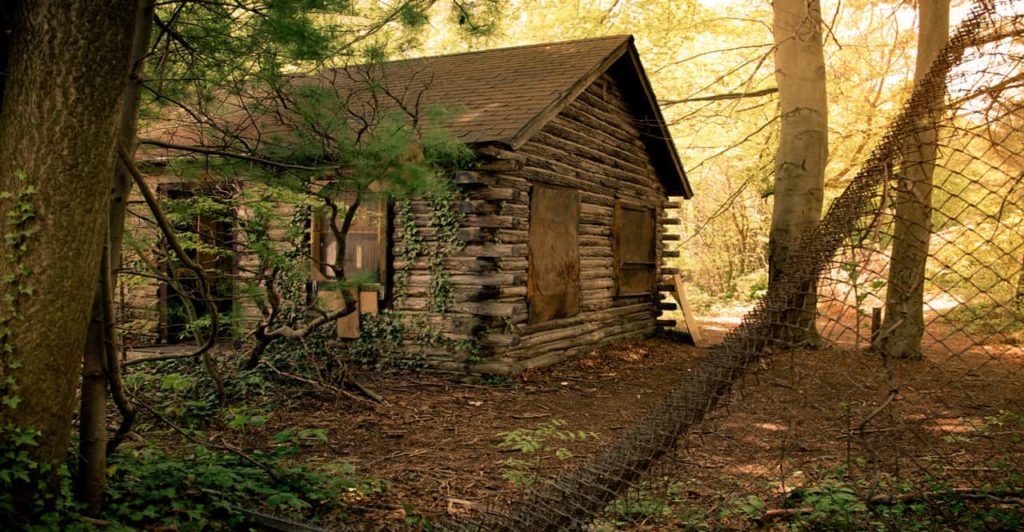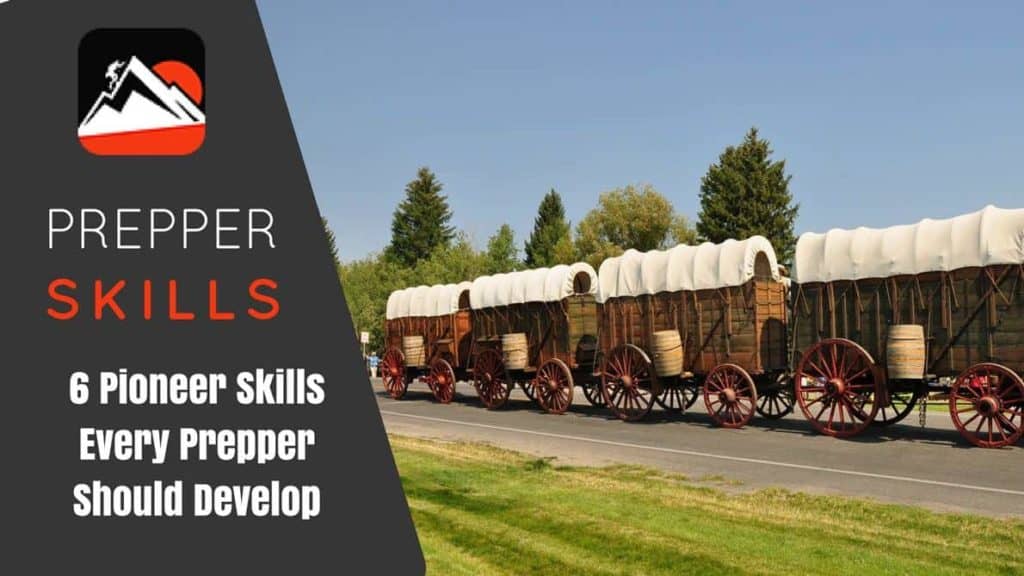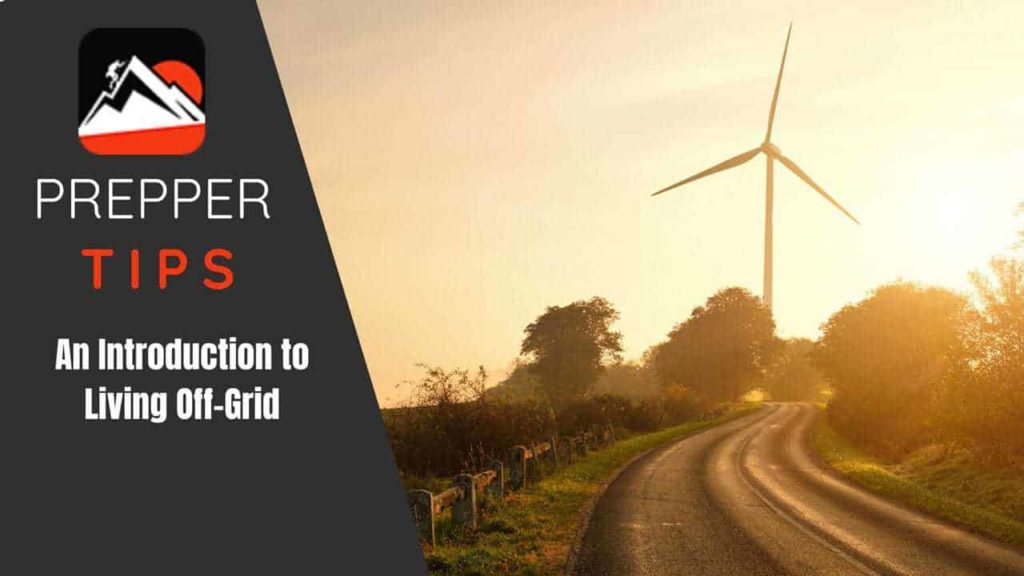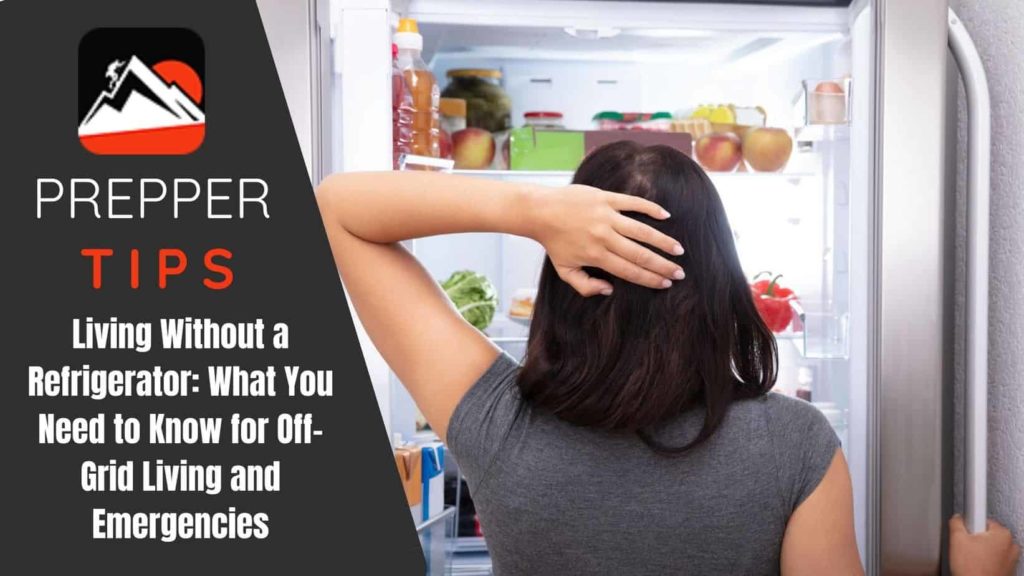Contents
Once you decide to definitively go off the grid, the next step is to figure out where you plan to go. While most places could be made suitable for survival, there is no getting around that some are better than others. Of course, what makes one state better than another might differ greatly whether it is natural resources, zoning laws, or even a cultural component. That is why we figured out what qualities are important to preppers and what distribution the states have between them. In this article, we will break down the 12 best states to live off the grid as well as a list of the factors to consider.
FACTORS TO CONSIDER WHEN CHOOSING A GOOD STATE TO LIVE OFF THE GRID
The factors that distinguish one place as better for a bug out shelter compared to another do not have a 1-to-1 comparison. Different factors will weigh heavier for different preppers, but some of them can place a greater stress on you in the moment than others. Ultimately, you will have to determine what factors are the most pressing, but we consider water availability and climate to be the most important. Water availability is fairly obvious, but climate is as important as it is because it affects the long-term viability more than other factors. In fact, it is the social factors like price and laws that are the least relevant–at least in terms of survival.
Price of the land – This is often one of the bigger determining factors due to a limited supply on most prepper’s end. If the climate or the zoning or the natural disasters are troublesome, you can find ways around those problems. Even taxes have a couple ways to lower them, but the price of land is often less flexible with fewer alternatives. That said, you should not necessarily allow a steep price to dissuade you from purchasing the ideal plot for your bug out shelter. The land on which you build is an investment, and a good investment might require more money up front to secure.
Of course, that does not mean that you should not take the price of the land into account. Simply, do not be afraid to spend more than you expected if the benefits will pay out in the long run. A clean freshwater source is invaluable to a bug out shelter and is easily worth a 10 percent increase in your budget. Likewise, other factors will raise or lower the value of the land accordingly. It is up to you to figure out what qualities in the land justify the cost–which is even more important if you plan of homesteading.
Laws and regulations for building – This factor is rarely important enough that you simply must omit an option from your list altogether. Basically, there are few locations outside an urban area with general regulations so onerous that you cannot figure out a suitable alternative. That said, few of the building codes required are outright bad ideas. Instead, they will often unnecessarily increase the cost of construction for your actual needs. Still, only rare examples provide the kind of absurdity you find on social media.
That is why building codes are almost never a reason to exclude a location from the list of possibilities. Instead, the building codes can be used to distinguish between multiple options with similar potential. Most of the instances where this can become a serious limitation involve building too close to a populated area. If you build your bug out shelter 10 miles from a large city, chances are you will still be fairly limited.
You might also find interesting our article about how to live off the grid.
Climate – There are essentially 3 things to consider in regards to the climate: sustainability, danger, and comfort. Of the 3, sustainability is easily the most important quality as that will have the greatest impact on the region’s long-term viability. Danger will refer more to natural disasters and difficulties, but you can usually prepare well enough for those. Comfort is fairly obvious and should be used more as a tie-breaker than anything else.
For sustainability, the climate will generally impact your water availability as well as your power potential. Of the 2, water availability is easily the more important as well as least likely to have an alternative. Wind turbines can be extremely effective, but if you do not have a river or aquifer, getting enough freshwater will be difficult. Final note: one of the biggest “dangers” regarding the climate are cold-weather regions where the winter months can become deadly for the unprepared.
Power Potential – This would be much more important if there were not so many different ways to generate power. Even in terms of clean, sustainable power, there are numerous options that can take advantage of different environments. That said, the most well-known and easily used method is solar power. Of course, a true solar array is more than a couple of panels and can get a bit pricey. Also, solar panels have a limited shelf-life and are not easily made restricting their long-term usefulness in the event of a societal collapse.
Wind power has been mentioned briefly and is a suitable alternative, but it is far more region-locked than solar power. Still, if you can consistently rely on wind power in the region, it is one of the better options. Using hydroelectric power can be incredibly effective and convenient if you have a large enough water supply. It is also important to consider whether the water supply freezes over in the winter before going with that option.
Taxes – This is the other factor that will often outright disqualify an option for some people simply because of the cost. That said, between the price of the land and the taxes on the property, the taxes are by far a bigger deal. This is because you own the land in the event of a disaster, but most of the time a disaster never actually happens. This means that year after year, you are paying taxes on land that is literally meant for use in case of an emergency.
Of course, if you purchase a valuable piece of land, you might pay a bit more up front, but you can also use the land for a variety of purposes. However, land with high property taxes may or may not actually be valuable for a prepper. In this way, the cost of land up front is generally more reasonable than the cost of the taxes levied thereafter.
Zone restrictions – Like with building regulations, this factor will often hinge more on how close to a populated area you build your bug out shelter. The closer to a large population you build, the more restrictive the zoning laws will be. That said, much like with building codes, rarely are you outright banned from using one alternative or another to accomplish your goal. It may not be ideal, but rarely is it simply not allowed in any way.
For instance, some locations may limit how many stories above or below ground you can build. While this is less than ideal, there are always alternative layouts that you can use which will work. Of course, the big thing regarding zoning is the ability to get your land zoned as agricultural land. This almost always drops the property tax rate, though there may be some requirements the land has to meet before being awarded that zoning designation.
Water availability – This is by far the most important factor to consider for long-term viability. If a piece of land does not have access to fresh water, you are likely going to have to set up a hauling system. If you plan on raising large livestock, this can quickly become an hour-long daily ordeal. Of course, this assumes that nothing will happen to the freshwater source in the first place, a prospect decreasing by the fracked well drilled.
In this instance, the best freshwater source is likely an underground aquifer far away from derricks. An underground aquifer filters the water and keeps it mostly protected. There are methods of setting up water farms for especially arid locations, but they will not produce the quantities necessary to raise large livestock. It is worth noting that a source of freshwater on your land is definitely worth paying more upfront and higher property taxes.
Natural Disaster Threats – This is definitely a factor to consider, but it is important to remember that your off-grid shelter is likely designed with this in mind. As such, there are a couple of natural disasters that are insurmountable and others that you can protect yourself against. For instance, building your shelter on a floodplain offers no real reasonable protection from the floodwaters except building your home on stilts. Of course, that completely ignores any livestock or crops.
That said, most other disasters like tornadoes, earthquakes, and the like are far less likely to occur. Even when they occur, there are ways to reinforce your structures and procedures to protect yourself. One potential exception to this rule is a blizzard which can ruin even the best shelters. Thankfully, blizzards that last months and drop feet of snow are uncommon outside of northern Alaska. Still, natural disasters reflect more a stress on your preparations than anything else.
Off the grid communities – This factor will weigh heavier depending on who you are as a person and why you want to live off-grid. If you are interested in living off-grid simply to avoid the machinations of a centralized, federal government, then there is a good chance you would like other like-minded people around you. If you are actively seeking a kind of hermitage, this factor will not be as relevant.
Not more than a decade ago, the idea of off the grid communities generally invoked far-right separatists. But these days, there are thriving off the grid communities that are simply living a more fulfilling and sustainable kind of life. As such, these communities can not only make living off-grid more enjoyable but easier too. It is much nicer to be able to ask for competent help than to have to rely on exclusively yourself. Just remember that all communities eventually create norms and you will be expected to adhere to them to remain.
Civil Liberties – To be clear, this is generally why people feel the need to go live off-grid in the first place. With the government constantly imposing more and more rules on how we are to live our lives, some people say “no.” That said, the limitations of civil liberties generally refers to gun rights as well as other nuanced rights. For those with families, the legal education requirements are quite often important.
Another aspect that could fall in this category is how you then interact with the connected world. For instance, many people try to supplement their life off-grid by selling surplus amounts of whatever they produce for themselves. If you keep chickens, you might want to sell some of their eggs. The same applies to cow’s milk too. The point is, civil liberties refers to you doing what you want so long as you are not hurting anyone else or people at large.
We also recommend reading our article about tips for living off the grid.
VIDEO INFOGRAPHIC
THE COST OF LIVING OFF THE GRID
Creating an off-grid lifestyle can be expensive upfront, but the benefits are numerous. Not only does living off the grid allow you to lower your carbon footprint and save money on energy bills but it allows you the space to grow your own natural food. Many people even choose to raise animals! Of course, this lifestyle also allows you to have a safe place to live independently.
Costs can vary greatly, depending on the environment you choose. If you get lucky enough to purchase land with a flowing water source that can save you a lot of money. If not, you may have to drill a well. Other costs include purchasing land to live on, home-building costs, installing power generation systems and managing water and waste.
In the below visual, BigRentz details some of the major costs associated with going off-grid. They cover necessities like shelter, water and waste systems but also touch on the costs associated with subsistence farming so that you can grow your own crops and raise livestock.
Once you figure out what your budget will be for your off-grid home, you can get started seeing what’s possible!

TOP 12 STATES TO LIVE OFF-GRID
The best state to live off-grid can be a bit contentious with razor-thin margins determining rank. It will also come down to what factors you value the most. Someone with extensive experience growing crops with short growing seasons is less likely to be affected by the frigid north. Similarly, someone who has significant capital is probably not quite as concerned with the price of land or property taxes as someone less well-off. That said, we rank the qualities that do not have good alternatives the highest which gives us our order. You may very well disagree with us depending on your starting circumstances, but we feel these are the best options for long-term sustainability.
#1 MISSOURI
| FACTORS | RATING |
|---|---|
| Resources: | (5/5) |
| Cost: | (3/5) |
| Legal: | (5/5) |
| Safety: | (3/5) |
| Comfort: | (4/5) |
| Overall: | (4/5) |
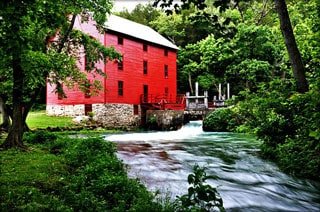
If you are looking to homestead, Missouri is likely the best place to be. This is not to suggest that it is universally the best since Missouri has more legitimate threats than do most states on our list with both tornadoes and flooding. However, if you can make sure your property is on elevated ground and properly sheltered, there are few real downsides. The weather can get a bit warm in the summer, but it is extremely comfortable and great for homesteading.
On top of that, Missouri has some of the more lax laws for both property usage and personal civil liberties. That said, the taxes in Missouri can get a bit out of hand, though there are zoning tricks to get around that. It is also no secret that Missouri is great for going off-grid, and has a strong off-grid community as well. Bite the wallet’s bullet and get the best.
#2 MAINE
| FACTORS | RATING |
|---|---|
| Resources: | (5/5) |
| Cost: | (4/5) |
| Legal: | (4/5) |
| Safety: | (5/5) |
| Comfort: | (2/5) |
| Overall: | (4/5) |
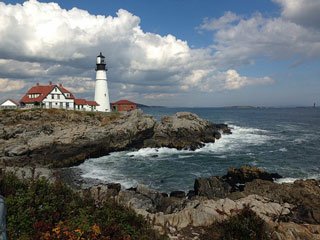
While some might try to compare Maine to Alaska, Maine’s weather is nowhere near as harsh. That said, the Maine winters are still plenty frigid and are susceptible to “Nor’Easters,” a special kind of winter blizzard/thunderstorm/hurricane kind of thing. Thankfully, those are far less common these days, but the winter cold is still no joke. Outside of that, there is not really too much to take issue with.
Obviously, the weather shortens the growing cycle, but other resources are in abundance. Wood, stone, water, game, everything you need to live off the grid is plentiful and fairly cheap considering its long-term viability. The zoning and building codes outside of populated areas are extremely reasonable. Gun rights are a big deal, so no worries there. Childcare is a bit more stringent, but they do not have onerous hoops to jump through. Selling things that you produce can be a bit tougher, though there are few restrictions on the actual production itself.
#3 TENNESSEE
| FACTORS | RATING |
|---|---|
| Resources: | (5/5) |
| Cost: | (4/5) |
| Legal: | (4/5) |
| Safety: | (4/5) |
| Comfort: | (4/5) |
| Overall: | (4.2/5) |
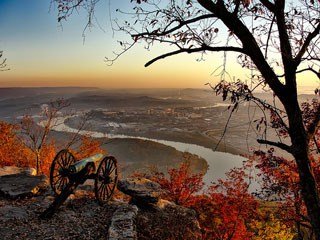
While Tennessee might be the highest rated state on our list, it has been trending downward. The more the state becomes aware of the growing, thriving off-grid community, the more it seems determined to stamp it out. Granted, the current legislature is not as bad as with some, but childcare, in particular, has been targeted. If not for this, Tennessee would easily be the best state for off-grid living.
#4 TEXAS
| FACTORS | RATING |
|---|---|
| Resources: | (4/5) |
| Cost: | (3/5) |
| Legal: | (4/5) |
| Safety: | (5/5) |
| Comfort: | (3/5) |
| Overall: | (3.8/5) |
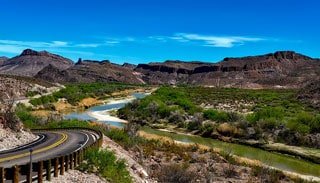
Generally, when you take about Texas for off-grid living, you are referring to the Eastern half of the state. The further west you go, the less hospitable the land. That said, there is a solid strip that sits right at the edge in the semi-arable land that is often less densely populated. Still, Texas is noted for generally having high property taxes, one of its biggest knocks. Also, the legality and the civil liberties can be a bit hit or miss.
This is because many of the decisions are made at the local level–sort of an anti-California. This means one county might have significantly different laws relating to gun-rights, selling of produce, and zoning. It is also worth noting that Texas provides an incredibly long growing season, but it is also likely to get uncomfortably hot at some point. Freshwater can also be difficult and will become a real issue for certain regions of the state where the government may restrict off-grid use during a drought.
#5 ALASKA
| FACTORS | RATING |
|---|---|
| Resources: | (4/5) |
| Cost: | (5/5) |
| Legal: | (5/5) |
| Safety: | (2/5) |
| Comfort: | (2/5) |
| Overall: | (3.6/5) |
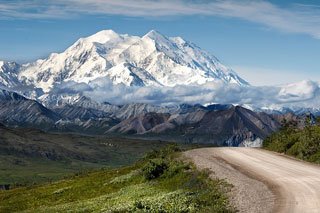
If you can get past the bitter cold winters and make sure you can feed yourself during those months, this is easily one of the best places to set up shop off-grid. In terms of price, Alaska is one of the few states where you can actually petition the federal government to pay you to go live there. While that will generally not apply to a prepper’s preferences, it highlights exactly how cheap going off-grid in Alaska can be.
On top of that, the legal arrangement is about everything that you could ask for. Outside of livestock housing laws designed to prevent animal abuse, there are few restrictions in general. Zoning and building codes are not a problem outside of the larger populated areas, and gun laws are about as lax as you can get. If not for the freezing winters, it would be a prepper’s paradise, and the isolation can make getting help difficult to impossible.
#6 PACIFIC NORTHWEST (OREGON)
| FACTORS | RATING |
|---|---|
| Resources: | (5/5) |
| Cost: | (2/5) |
| Legal: | (2/5) |
| Safety: | (3/5) |
| Comfort: | (5/5) |
| Overall: | (3.4/5) |
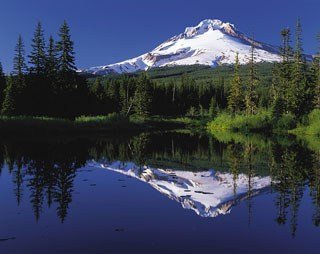
We are counting this region as a state because all of the areas are solid options and they all have close to the same profile. First, you definitely want to look further inland towards the eastern portion of the region. Here, outside of the highly liberal urban centers, the entire culture changes. The land is less populated and many of the more onerous legal restrictions are relaxed. That said, there can still be plenty of tricky civil liberties issues, especially in relation to firearms and childcare.
Regardless, this entire region is lush with natural resources and plenty of freshwaters–though California may have restrictions on collection or use. This entire region is also less expensive than the urban areas but still more expensive than most of the other options on our list. In terms of safety, you still have to worry about the occasional earthquake, but wildfires are the new number one threat. Of course, there are few places more comfortable than the Pacific Northwest giving it a “niche” bump up on our list.
#7 ARIZONA
| FACTORS | RATING |
|---|---|
| Resources: | (2/5) |
| Cost: | (4/5) |
| Legal: | (5/5) |
| Safety: | (4/5) |
| Comfort: | (3/5) |
| Overall: | (3.6/5) |

The big knock on Arizona is always going to be its lack of water availability, and that is not likely to change any time soon. Another potential issue with Arizona is the lack of natural resources outside of stone–and that can still be regional. However, the northern part of the state offers a solid amount of wooded arable land. Still, the best thing about Arizona has to be the degree of freedom afforded.
Since the state is sparsely populated, as soon as you get outside of a populated area, zoning and building codes quickly evaporate. In fact, this has led to a fairly large off-grid community sprouting up across a stretch the includes Nevada and New Mexico as well as Arizona. Finally, the abundant sunlight and mild climate make for a long growing season and ample solar power options. The costs are not too high, but neither are they especially low either.
#8 COLORADO
| FACTORS | RATING |
|---|---|
| Resources: | (4/5) |
| Cost: | (3/5) |
| Legal: | (2/5) |
| Safety: | (5/5) |
| Comfort: | (4/5) |
| Overall: | (3.6/5) |
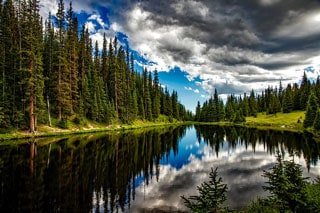
This one can be a bit tricky as the majority of the most habitable land is already occupied. That is not to suggest there is not plenty of great land to homestead in Colorado, but it is more dispersed than many of the other options on our list. That said, the relative liberalism of the urban areas in Colorado often translates into a fairly self-sufficient surrounding area. As such, it should not be surprising that Colorado has some of the more plentiful off-grid communities.
With plenty of resources outside of the arid south, the biggest concern in Colorado is the civil liberties. Gun rights are not really much of an issue outside of the urban centers, but childcare can be a bit more difficult. On the plus side, Colorado is one of the fastest moving states in terms of getting their state legislature to provide definitive standards for living off-grid. In this case, the more off-gridders they have, the quicker the laws will change.
#9 MONTANA
| FACTORS | RATING |
|---|---|
| Resources: | (4/5) |
| Cost: | (4/5) |
| Legal: | (4/5) |
| Safety: | (4/5) |
| Comfort: | (2/5) |
| Overall: | (3.6/5) |
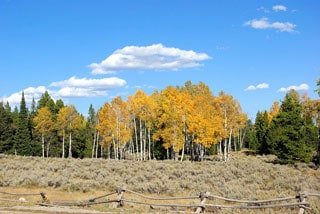
The Big Sky certainly lives up to its name and it bears a striking resemblance to Alaska in terms of factors. In fact, Montana can be considered like an Alaska-Lite. Keep in mind, it distinguishes itself from its other northern neighbors on our list legally. Whereas Idaho and the Dakotas are fairly restrictive with the legal requirements, Montana will pretty much let you do your own thing in your own way. The bigger issue with Montana comes in literal cost with the price of land and property taxes.
That said, Montana has significant resources for most homesteading operations, though the northern position shortens the growing season. Thankfully, Montana is a ranching state, so raising livestock is fairly easy and inexpensive. As you expect this far north, the winters are cold, but the risk of natural disasters is low. The selling of made goods can be difficult with an outright ban on raw milk altogether. Still, Montana provides an ideal setting for a more private homestead.
#10 WYOMING
| FACTORS | RATING |
|---|---|
| Resources: | (4/5) |
| Cost: | (3/5) |
| Legal: | (3/5) |
| Safety: | (4/5) |
| Comfort: | (3/5) |
| Overall: | (3.4/5) |
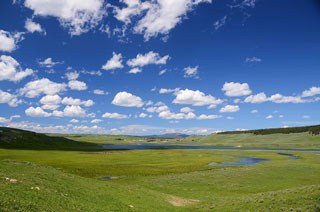
Wyoming would have been a hot tip for off-grid living 30 years ago. These days, massive tracts of lands measuring in the millions of hectares have been purchased by billionaires. That said, there is a reason they have done so, and if you can manage it, you should give it a thought. The west is fairly arid and unusable, but the eastern half of the state is excellent. Still, the parts available are a dream come true.
First, Wyoming has an abundance of natural resources including timber, stone, and freshwater. On top of that, the civil liberty laws are fairly lax as well, though the zoning and building codes can be a bit stiffer. The climate is not ideal, but the summers are temperate and Wyoming does have 4 full seasons. Still, Wyoming is also a solid option because it is one of the least densely populated states in the nation.
#11 IDAHO
| FACTORS | RATING |
|---|---|
| Resources: | (4/5) |
| Cost: | (4/5) |
| Legal: | (3/5) |
| Safety: | (4/5) |
| Comfort: | (2/5) |
| Overall: | (3.4/5) |
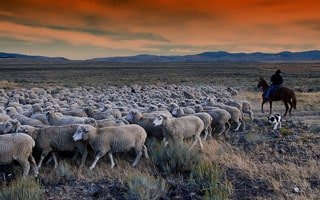
In terms of climate, sustainability, and resources in general, you can think of Idaho as a more northern Colorado. However, when you consider the social factors of cost and legality, Idaho becomes a far more attractive option. Of course, the big issue with Idaho is that it is either mountainous or more stringently controlled. Basically, the most habitable part of Idaho is more or less “reserved” for future development.
This means that building permits can be a bit trickier to get depending on the setup. However, Idaho is definitely more lenient in terms of civil liberties if you can meet their standards. On top of that, the region has plenty of resources, though you will want to research what industries use which water sources and at what point. Also, the soil is fertile, but the short growing season will likely necessitate some meat leaving vegetarians a bit out in the cold.
#12 DAKOTAS
| FACTORS | RATING |
|---|---|
| Resources: | (4/5) |
| Cost: | (3/5) |
| Legal: | (3/5) |
| Safety: | (4/5) |
| Comfort: | (2/5) |
| Overall: | (3.2/5) |
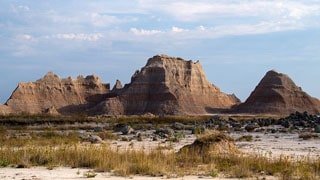
The Dakotas would be much higher on this list if there were not so many tricky issues with land usage due to the high number of native reservations. We all remember the Keystone pipeline debacle, but that can be just as big of an issue for smaller landowners as well. That said, if you get a piece of Dakota land without those restrictions, you are in for a real treat. And the relatively inexpensive costs do help, though taxes can require some hoops to lower.
Like all of the land at the Canadian border, the winters can get bitter cold. However, the cost of land and taxes, the civil liberties, and the resources are all solid. One note: the pipelines do pose a risk to the drinking water nearby and have already burst multiple times. As such, make it a point to get a plot of land that is not downriver from a pipeline to ensure clean freshwater.
CONCLUSION
As we can see, certain factors like the power and water availability are important no matter the other considerations. The legal elements may give you pause, and the natural disasters might inspire irrational fear. But so long as you can sustain yourself without infringement from the government, most of these states are good to great options. Of course, childcare is the thorniest issue, so do additional research if that is a factor you must consider. Just remember that wherever you choose to go, make sure it is a place you can feel good about one or more decades from now.

